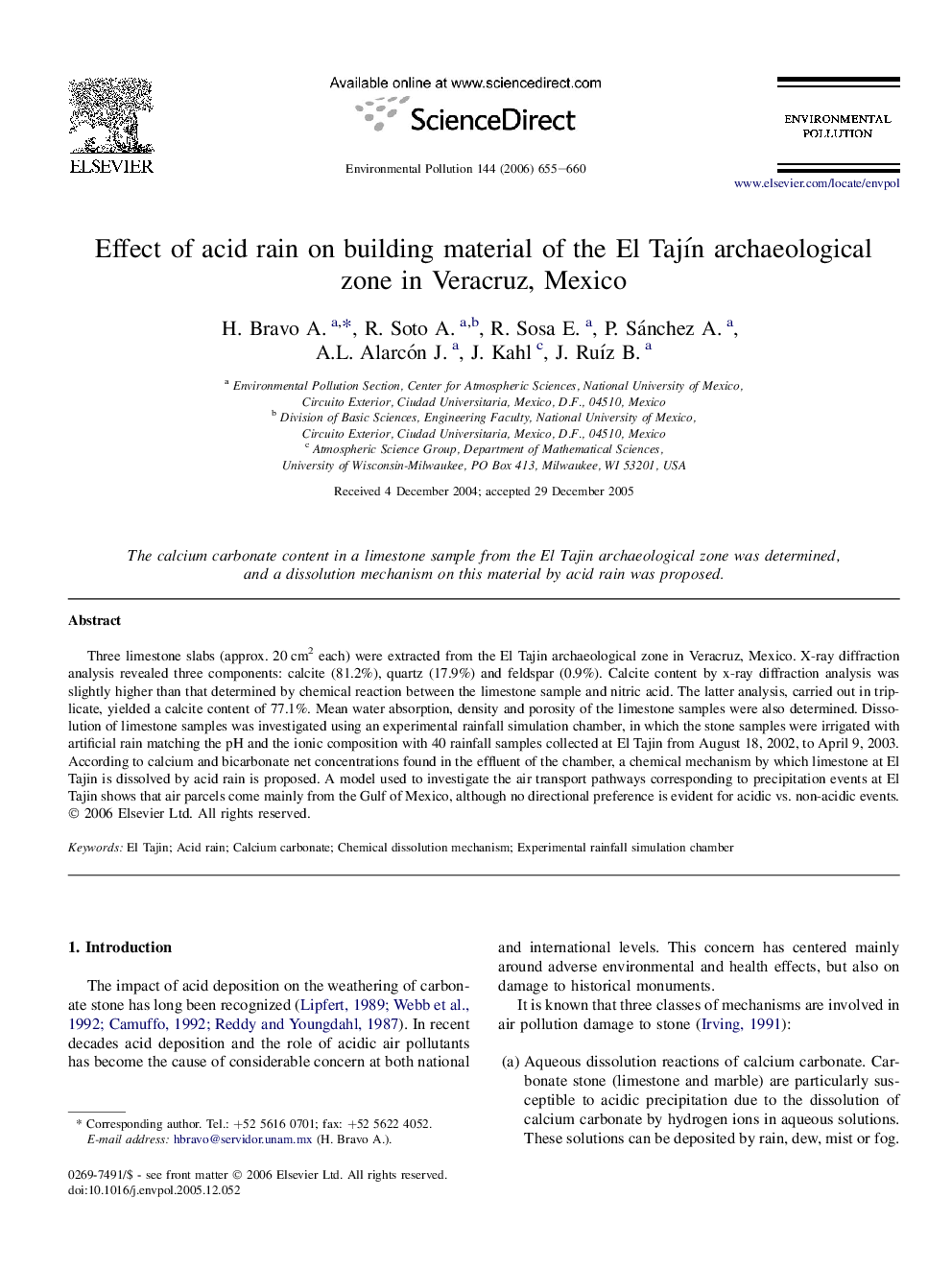| Article ID | Journal | Published Year | Pages | File Type |
|---|---|---|---|---|
| 4427790 | Environmental Pollution | 2006 | 6 Pages |
Abstract
Three limestone slabs (approx. 20Â cm2 each) were extracted from the El Tajin archaeological zone in Veracruz, Mexico. X-ray diffraction analysis revealed three components: calcite (81.2%), quartz (17.9%) and feldspar (0.9%). Calcite content by x-ray diffraction analysis was slightly higher than that determined by chemical reaction between the limestone sample and nitric acid. The latter analysis, carried out in triplicate, yielded a calcite content of 77.1%. Mean water absorption, density and porosity of the limestone samples were also determined. Dissolution of limestone samples was investigated using an experimental rainfall simulation chamber, in which the stone samples were irrigated with artificial rain matching the pH and the ionic composition with 40 rainfall samples collected at El Tajin from August 18, 2002, to April 9, 2003. According to calcium and bicarbonate net concentrations found in the effluent of the chamber, a chemical mechanism by which limestone at El Tajin is dissolved by acid rain is proposed. A model used to investigate the air transport pathways corresponding to precipitation events at El Tajin shows that air parcels come mainly from the Gulf of Mexico, although no directional preference is evident for acidic vs. non-acidic events.
Keywords
Related Topics
Life Sciences
Environmental Science
Environmental Chemistry
Authors
H. Bravo A., R. Soto A., R. Sosa E., P. Sánchez A., A.L. Alarcón J., J. Kahl, J. RuÃz B.,
